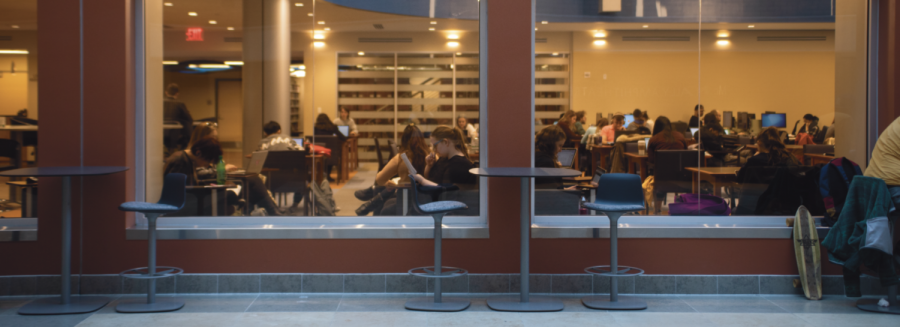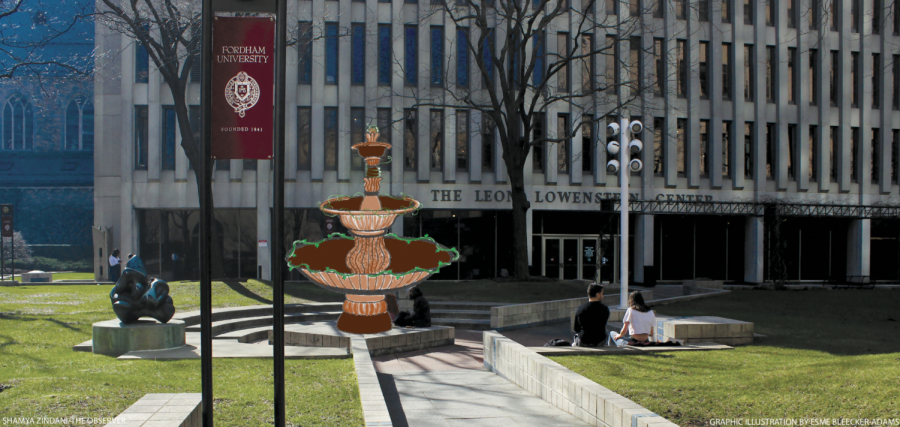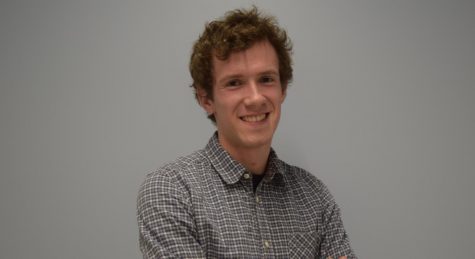Space Cram
Allocating resources efficiently on a campus that is becoming increasingly congested
Frederick Wertz, dean of Fordham College at Lincoln Center, envisions a large fountain in the center of the Outdoor Plaza.
February 6, 2019
Space is a valuable commodity at Fordham Lincoln Center. Students, faculty and staff from the various colleges located on campus — the Gabelli School of Business, the Graduate School of Education and the Law School, to name a few — all share and sometimes compete for it. As all of the schools at Lincoln Center continue to grow, the university has focused heavily on both the construction of new space and the renovation of existing space.
Frederick Wertz, professor of psychology and interim dean of Fordham College at Lincoln Center (FCLC), has an ambitious vision for a remodeled Outdoor Plaza. “I would love to see a big fountain, like a piazza, in the center,” he said. He imagined a large outdoor performance space with “a canopy that could open and close depending on the weather.”
Wertz explained how a good portion of the plaza sits above the currently vacant old Quinn Library. If plans are made that take into consideration the potential of the plaza above ground and the possibilities of old Quinn below ground, Fordham could “have a very dynamic, multi-level thing going on there,” he said. “There’s no college or university in the city that would be as attractive as that.”
The plan is perhaps too large in scale to actually come to fruition, but it nonetheless reflects Wertz’s desire to transform the Lincoln Center campus into a “destination … a place where you’d want to be.”
Wertz sits on the Lincoln Center Space Planning Committee, which was originally formed to plan the construction of the new Law School building and McKeon Hall. Its role has since expanded to oversee general space use across campus.
One of the biggest challenges that the committee faces is communication between departments and colleges with regard to space. Frank Simio, vice president of Lincoln Center and co-chairman of the Space Planning Committee, stressed the importance of “getting everybody to cooperate and work together.”
“The only way any of us are going to get what we want,” he said, “is to work cooperatively.”
Wertz echoed these sentiments. “His perspective,” he said of Simio, “is one that attempts to balance his respect for the autonomy of each of the schools and the common good.” This balancing act, though, is at times a difficult one. “There are some schools, like for instance the Graduate School of Social Service, that I think feel as if they really are cramped,” Wertz said. “The overarching situation is that we don’t have enough space.”
The Fordham Theatre Department, according to Wertz, has wanted a dedicated theater space for many years. The department’s mainstage performances are put on in Pope Auditorium in the Leon Lowenstein Center, a space that is also used for concerts, lectures and university functions.
Jack Bugbee, FCLC ’19, agreed that a dedicated space would be beneficial to the department. Although he did not think that sharing Pope Auditorium with other groups was a major problem, he would like to see a space where “we didn’t have non-theater people going in,” he said. “They tend not to treat the equipment and the set pieces the same way that a person trained in theater would treat them.”
Of course, sometimes when space is shared out of necessity, problems can arise. The Space Planning Committee is currently looking to address the lack of office space for part-time faculty. Many part-time faculty members hold their office hours in public places like the Ram Cafe, which Wertz said always struck him as “not optimal.”
Wertz has been working with Mary Bly, acting associate dean of FCLC, to find additional office space in which part-time faculty can meet privately with students. Any space they locate, though, would likely be “limited,” Wertz said, and would act as a “supplement” to more public meeting spaces.
The need for additional office space has also entered the conversation surrounding the old Quinn Library space, which has sat vacant since fall 2016 when the library moved to its current home in the 140 West building.
“The trouble with space like that,” Wertz said of old Quinn, “is that it’s extremely expensive to do anything with it.”
A proposed plan for old Quinn involves using it as “swing space” during an extensive, floor-by-floor renovation of Lowenstein, which could take up to 10 years, Wertz said. As a floor was being worked on, the displaced offices on that floor would temporarily relocate to old Quinn. This plan, then, would mean that old Quinn would not be available for general student use again until the Lowenstein renovations were completed.
Wertz was not sure if using old Quinn as swing space would ultimately be worthwhile. “There’s a lot of interest in renovating other floors in Lowenstein,” he said, but questioned if such a plan was the best immediate use of the university’s time and resources. “I’d love to see that be prioritized,” he said of old Quinn, but continued, “I think communication, student input, faculty input, discussions at every level are important because then we know what our values are.”

While he supports the idea of a Lowenstein renovation, Bugbee called the proposal to use old Quinn as swing space a “questionable” one. “There are empty rooms on campus, and I feel like they could probably be used,” he said, adding that temporary workplace relocations can “derail productivity.”
As old Quinn sits empty, students like Bugbee noticed other spaces on campus that were also perhaps being underutilized. “Rooms like G76, those can probably see more use as well,” he said of the multi-purpose space in the 140 W. building. The room is well-suited “for a ton of different things.”
“I feel like that space is not never, but rarely used,” Bugbee said, certainly “not as much as it could be.”










